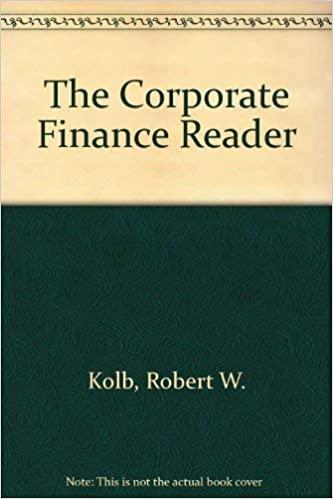Answered step by step
Verified Expert Solution
Question
1 Approved Answer
I. Investment Outlays CAPEX * * ( 1 - T ) lncrease in inventory Increase in accounts payable ? ? ? ? N O W
I. Investment Outlays
CAPEX
lncrease in inventory
Increase in accounts payable
II Project Operating CashFlows
Unit sales
Priceunit
Total revenues
Operating costs
Depreciation: Bonus Depredation In Year
Total costs
EBITor operating income
Taxes on operating income
EBIT T Aftertax operating Income
Add back depreciation
EBIT T DEP
III. Project Termination Cash Flows
Salvage value taxed as ordinary Income
Tax on salvage value
Aftertax salvage value
NOWC Recovery of NOWC
Project free cash flows
EBIT T DEP CAPEX NOWC
IV Results
IRR
MIRR Allied Food Products is considering expanding into the fruit juice business with a new
fresh lemon juice product. Assume that you were recently hired as assistant to the director of
capital budgeting, and you must evaluate the new project. The lemon juice would be produced in
an unused building adjacent to Allied's Fort Myers plant; Allied owns the building, which is fully
depreciated. The purchase price of the required equipment is $ including shipping and
installation costs, and the equipment is eligible for bonus depreciation at the tune of
purchase.
In addition, inventories would rise by $ while accounts payable would increase by
$ All of these costs would be incurred at t
The project is expected to operate for years, at which time it will be terminated. The
cash inflows are assumed to begin year after the project is undertaken, or at t and to
continue out to t At the end of the project's life t the equipment is expected to have a
salvage value of $
Unit sales are expected to total units per year, and the expected sales price is
$ per unit. Cash operating costs for the project are expected to total of dollar sales.
Allied's tax rate is Tentatively, the lemon juice project is assumed to be of equal risk to
Allied's other assets.
You have been asked to evaluate the project and to make a recommendation of whether it
should be accepted or rejected. To guide you in your analysis, your boss gave you the following
set of tasksquestions:
a Allied has a standard form that is used in the capital budgeting process. See
Excel Table. Part of the table has been completed, but you nust replace the blanks with the
nissing nunbers. Complete the table using tile following steps:
Fill in the blanks under Year for the initial investment outlays: CAPEXT
and Delta NOWC.
Complete the table for unit sales, sales price, total revenues, and operating costs.
Complete the table down to aftertax operating income and then down to the
project's operating cash flows, EBIT T DEP.
Fill in the blanks under Year for the terminal cash flows and complete
the project free cash flow line. Discuss the recovery of net operating working capital.
What would have happened if the machinery had been sold for less than its book value?
b Allied uses debt in its capital structure, so some of the money used to finance the
project will be debt. Given this fact, should the projected cash flows be revised to show projected
interest charges? Explain.
Suppose you learned that Allied had spent $ to renovate the building last year,
expensing these costs. Should this cost be reflected in the analysis? Explain.
Suppose you learned that Allied could lease its building to another party and earn
$ per year. Should that fact be reflected in the analysis? If so how?
Assume that the lemon juice project would take profitable sales away from Allied's
fresh orange juice business. Should that fact be reflected in your analysis? If so how?
c Disregard all the assumptions made in part b and assume there is no alternative use for the
building over the next years. Assume that Allied Food Products pays interest on its debt;
the firm's beta is the riskfree rate equals and the market risk premium is
Additionally, Allied Foods target capital structure consists of debt, and equity.
Now calculate Allieds WACC, the project's NPV IRR, MIRR, regular paybacks, and
discounted paybacks. Do these indicators suggest that the project should be accepted?
Explain.
If the WACC was would this change your recommendation? If the WACC was
would this change your recommendation? Explain your answers.

Step by Step Solution
There are 3 Steps involved in it
Step: 1

Get Instant Access to Expert-Tailored Solutions
See step-by-step solutions with expert insights and AI powered tools for academic success
Step: 2

Step: 3

Ace Your Homework with AI
Get the answers you need in no time with our AI-driven, step-by-step assistance
Get Started


